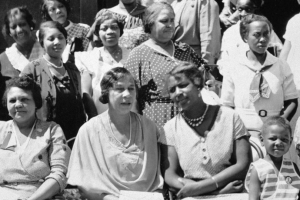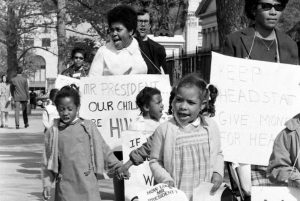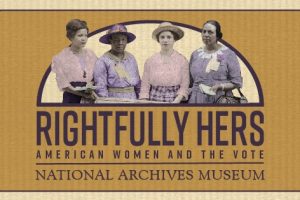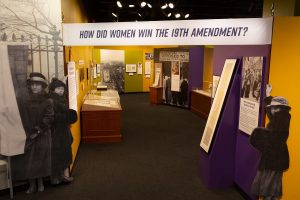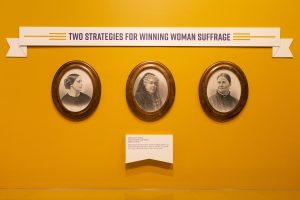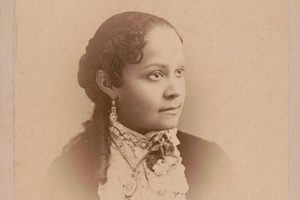The right of citizens of the United States to vote shall not be denied or abridged by the United States or by any State on account of sex.
Congress shall have power to enforce this article by appropriate legislation.
Amendment XIX

FAQ
African American women did not march at the back of the 1913 parade. This historical error often appears in suffrage histories, unfortunately. Several dozen black women participated in the 1913 parade, marching in various state, education, and occupation delegations. Ida B. Wells, marching with others from Illinois, was the most famous black marcher. A group of young college women from Howard University in Washington, DC marched with the college delegation. Delaware, New York and Michigan contingents all included black women. This information is verified in the NAACP’s April 1913 edition of the NAACP publication The Crisis.
In recent years, we have seen politicians like Nancy Pelosi, Alexandria Ocasio-Cortez, and Hillary Clinton, wear white to link their campaigns to the votes-for-women movement of the 1800s and early 1900s. However, white became associated with suffrage only in the latter years of the movement, when parades and grand events provided opportunities for visual messaging.
There were a multitude of American suffrage organizations by 1900, some based in cities, others in counties or states. Two national organizations formed after the Civil War. In 1890, they united as the National American Woman Suffrage Association, known as NAWSA or the National. In 1913, the Congressional Union was founded by Alice Paul; that group later became the National Woman’s Party (CU/NWP).
NAWSA never identified official colors, knowing that state and local groups were already using a wide variety of colors. Nonetheless, during and after a failed 1867 Kansas state suffrage referendum, suffragists began using yellow or gold (for the Sunflower State) for the sashes, ribbons and buttons they wore and sold.
Many American suffragists were excited by the militant suffrage efforts in Britain after 1905, led by Emmeline and Christabel Pankhurst. The Pankhursts chose purple, white and green as their colors in the many parades and demonstrations they organized. One American enthusiast, Harriot Stanton Blatch, adopted the purple, white and green when she founded the Women’s Political Union (WPU) in New York City in 1910 and began organizing suffrage parades and other outdoor events. She asked women to wear white dresses as a visual statement in the parades.
When Alice Paul, a protégé of the Pankhursts, organized the March 1913 NAWSA suffrage procession in Washington, DC, she at first chose purple, white, and green as official parade colors. Not wishing to be associated with the British militants, NAWSA staff quickly informed Paul that NAWSA had no official colors but did not wish her to use the Pankhursts’ tricolor. Paul then switched parade colors to purple, white and gold, to acknowledge the historical use of gold in the American suffrage movement. When Alice Paul later founded the CU/NWP, she retained the purple/white/gold as official colors. The tricolor banners and sashes her followers used in the 1917 White House picketing are now legendary.
With Alice Paul’s reputation on the ascendancy in the 21st century, many 2020 groups are presenting purple, white, and gold as historical suffrage colors. White and gold are the only two colors which were historically employed by the whole of the suffrage movement, militant and mainstream.
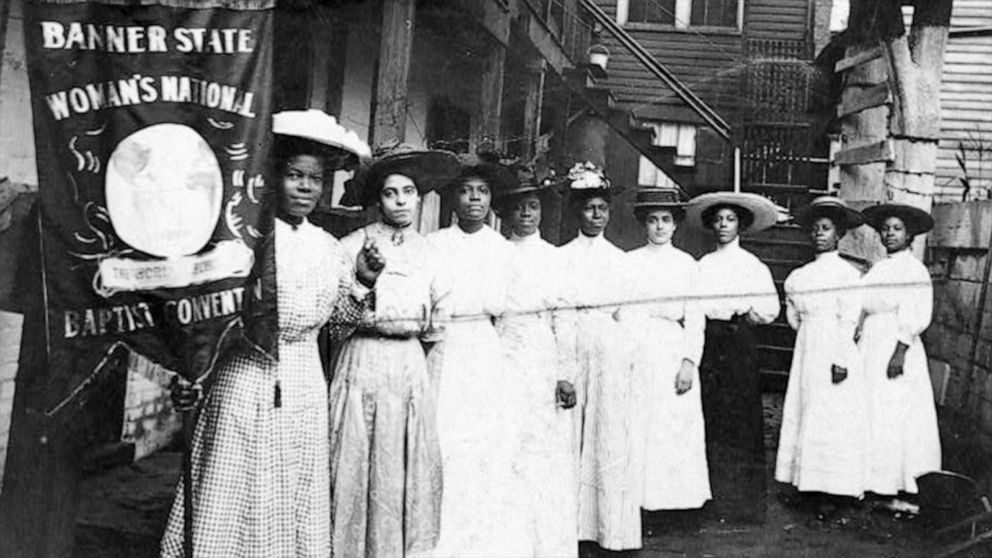
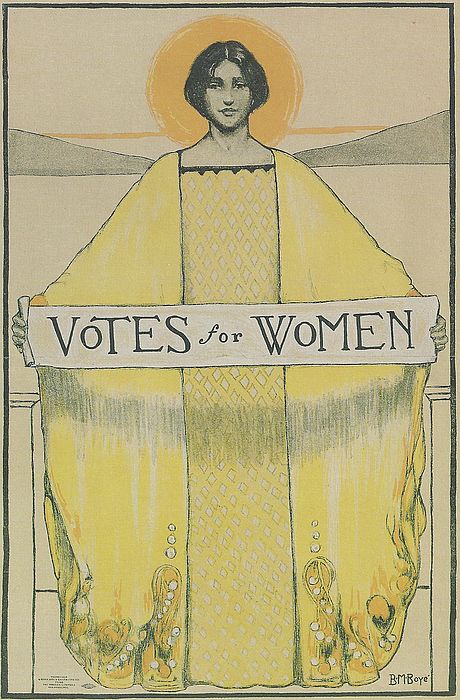
19th Amendment
Watch Library programs on the 19th Amendment here!


